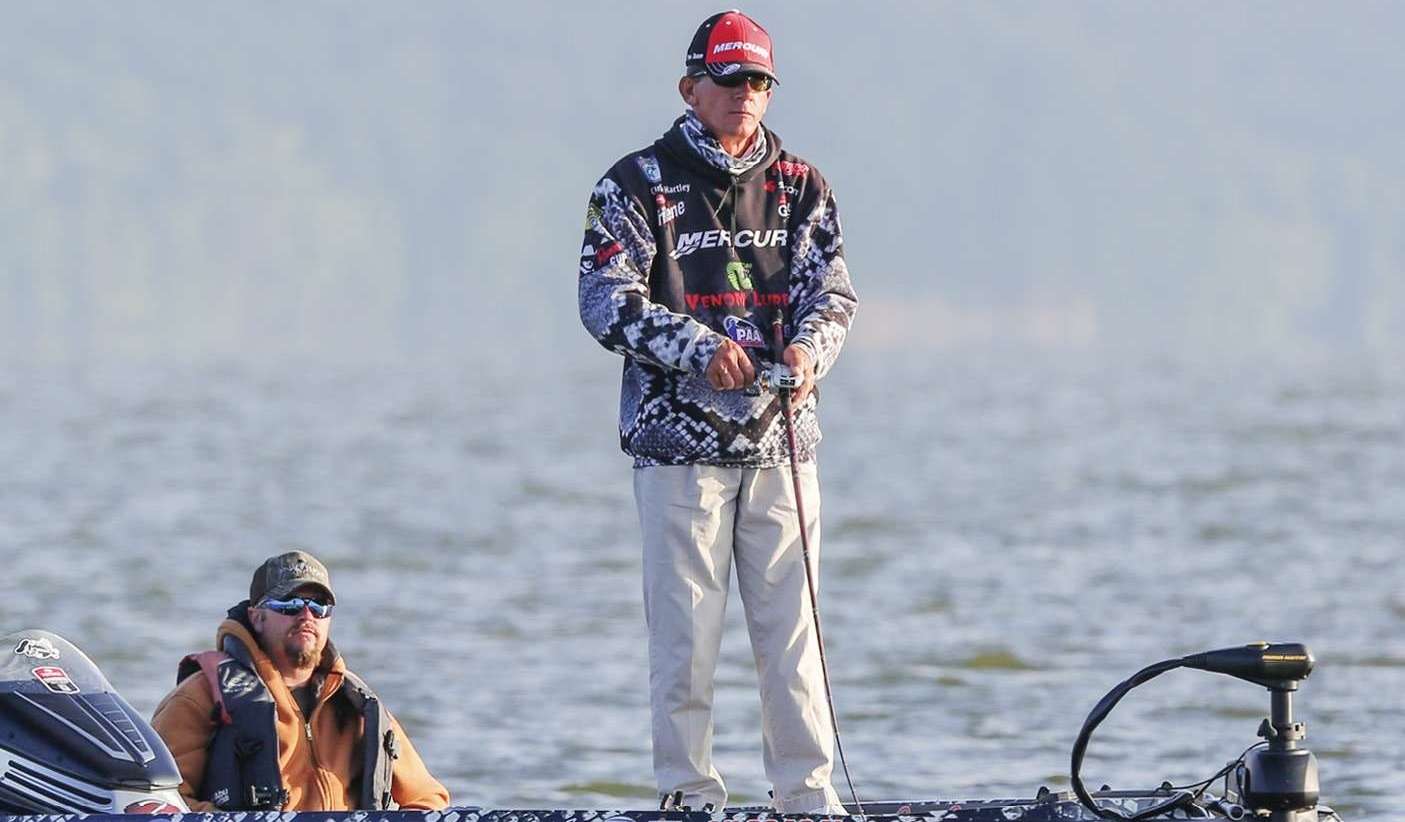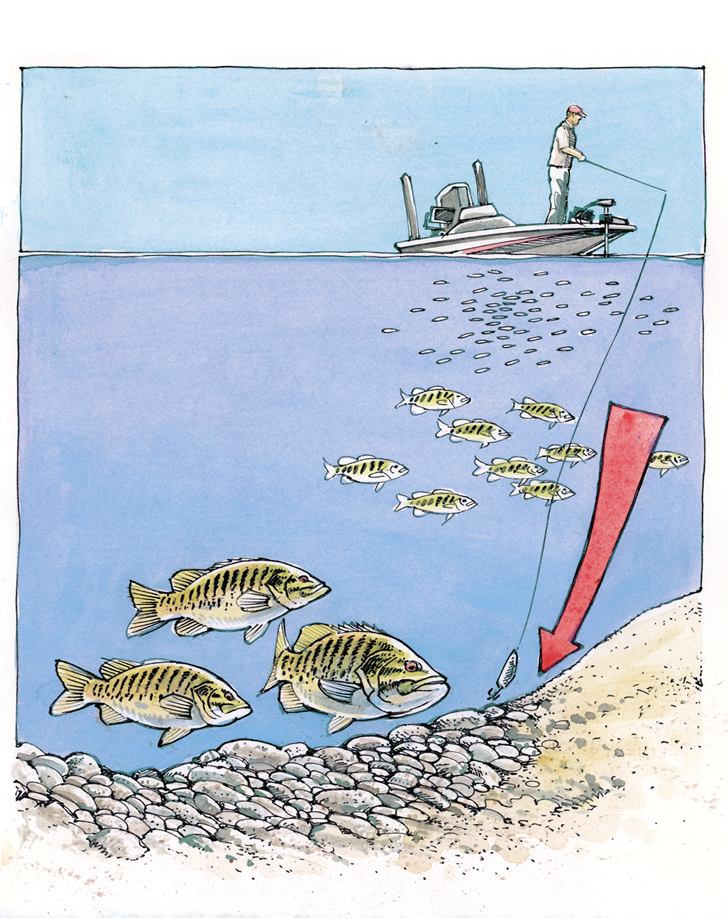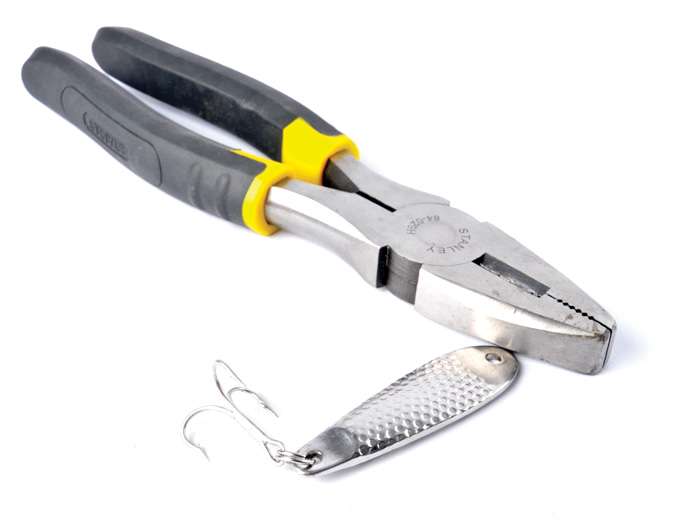
It’s a risk many anglers are willing to take. It’s the fishing chance of a lifetime. It’s an opportunity to experience bassing at its absolute, unbelievable best, says Bassmaster Elite Series pro Charlie Hartley.
He’s talking about fishing the Great Lakes in November. The upside of doing so is acres of smallmouth bass that run 4 to 6 pounds, with a few giants over 7. Hundred-fish days. Muscles aching from fighting and reeling.
But there’s also a downside: winds that can whip lakes Erie, Ontario and Michigan into howling banshees. Waves that can toss bass boats around like floating matchsticks. Rollers that should have the word “steam” in front of them.
“I’ve been out on days when I wanted my mama,” Hartley divulges. “I’ve had times when I’ve kissed the ground when I made it in. I’ve seen tournament partners that demanded to be taken in, and they wouldn’t go back out. Anybody planning to fish the Great Lakes in late fall should understand that they have to pick their days. When the wind advisories are up, forget it. But when the wind is down, you can catch smallmouth like you never dreamed of.”
Hartley lives in Grove City, Ohio, and he loves bass fishing this time of year. He says, “I’ve fished in November and December from the Canadian border to the Mexican border. Up north, the bass are feeding up for winter. In the south, they’re in prespawn. So there are good fishing opportunities all over the country.
“But for my money, when the weather cooperates, the Great Lakes offer absolutely the best fishing this time of year. When you hit it right, you won’t believe how good it can be.
“This great bite lasts from a week to a month long, starting in late October. The water surface temperature will be from the mid-40s down to the mid-30s, and the pattern will hold up until the lakes begin to freeze over.
“This time of year, the smallmouth are gorging themselves on perch and smelt just out from where major tributaries empty into the lakes. They’re hanging on deep rock flats where the bottom shallows up toward the mouths of the tributaries.”
Hartley adds, “Find the bait, and you’ll find the bass.”
One of the easiest ways to do this is to look for perch boats. “These are guide boats that target yellow perch, which feed on the smelt. You’ll see these boats in clusters, sometimes 20 to 30 of them working around the mouth of a tributary.
“When you find the perch boats, start idling among them while watching your scanner,” Hartley continues. “You want to see bait on your display that’s solid from top to bottom. I’m talking about where you’re having trouble recognizing the bottom of the lake through all the fish returns. Don’t be happy until you see that.”
The baitfish and predators will typically be layered, with smelt closest to the water’s surface, Hartley says. The perch (along with small bass and walleye) will be in the middle column, stalking and feeding on the smelt. The big smallies will hang at or near the bottom, waiting for crippled smelt to flitter down from the frenzy above. He says, “The average depth of the big smallies will be 35 to 45 feet deep. They usually won’t be farther than a couple of miles out from the mouth of the tributary.”
Hartley emphasizes, “Now I’m not talking about one bass here and one there. I’m talking about huge schools — thousands! This is the closest thing to ocean fishing in freshwater.”
When he’s confident he’s over a school of smallmouth, Hartley sets about catching them. He uses one technique and two baits: vertical jigging with a jigging spoon or a blade bait.

In spoons, Hartley prefers a Hopkins or Bass Pro Shops Lazer Eye hammered jigging spoon. He rigs his spoons with an O-ring for better action (but no swivel!). In blade baits, he goes with a Silver Buddy, Vib-E or Venom bait. He fishes chrome baits when the water is clear and gold baits when the water is stained.
His choice in bait sizes is dictated by the wind. “My standard is 3/4-ounce spoons and blade baits,” he says, “but if the wind is up, I go with heavier baits, up to 1 1/2 ounces. Sometimes the wind and currents push the boat so fast, it’s hard to get the bait to the bottom. When I can’t feel the bottom, I go heavier. You’ve got to have that bottom contact.”
Water clarity can affect success on any given day. “A strong wind can stir up the mud in the shallows, and muddy water can really hurt this pattern. If the water is clear, I think, ‘Oh, boy, I’m going to kill ’em today.’ But if the water is too brown, I know fishing is going to be tough.”
Hartley’s jigging technique is simple. He says, “I let the bait free spool to the bottom, then I engage my reel, take up slack line and start hopping the spoon or blade bait up and down as I work the structure.”
Hartley guards against jigging too aggressively. “Don’t forget: The water is cold, and the fish are getting sluggish. So I jig with a subtle rod action. I don’t pop the bait up. Instead, I lift it a couple of feet off bottom, just fast enough to feel the vibration. Then I stop it and follow it with my rod tip as it flutters back down.”
Hartley says most strikes come when the bait drops. “Sometimes you can feel a bite, but other times you won’t. If you start lifting the bait for the next hop and you just feel dead weight, set the hook!”
The wind and current define the direction of drift he has to make. “The main thing is to stay over the baitfish. Your scanner should stay lit up. If you’re not seeing bait, you need to relocate and search until you find them again.”
And when he catches a good smallmouth? “I’ll mark a waypoint on my GPS, then I’ll motor upwind and try to repeat the drift I just made. A lot of times I’ll catch a bass every time I pass over this spot.
“You always have to keep safety in mind,” Hartley warns. “You can’t disrespect the Great Lakes. Their smallmouth fishing is fantastic in late fall, but it isn’t good enough to risk your life over.”
Tackle tips

Following are specifics on the rod, reel and line that Charlie Hartley uses to jig up Great Lakes smallmouth.
Rod: 6-6 medium action Abu Garcia Veritas
Reel: Abu Garcia Revo MGX casting; 7.1:1 retrieve ratio
Line: 10-pound-test green Stren monofilament
Regional Differences

Dale Hollow Lake, Tennessee/ Kentucky — Work a jig and Berkley Chigger Craw (green pumpkin) and a Strike King 5X deep crankbait (shad) around main-lake points and secondary points. These points should be all rock. Keep experimenting to find the right locations and depths.
Lake Kissimmee, Florida — Cast a topwater prop bait or a Johnson Silver Minnow (with a skirt) around patches of open-water grass. Charlie Hartley says, “This is the time of year when Florida bass are most aggressive, and this is why splashy, noisy, fast-moving lures are best.”
Sam Rayburn Reservoir, Texas — Now is when many Big Sam bass are moving from deep summer areas into the shallows. Fish in the pockets around visible wood cover and docks. Best baits are a jig/Berkley Chigger Craw and a buzzbait. Best colors are white and black.
Originally published in Bassmaster Magazine in 2017.

Lure Modification
Sometimes Charlie Hartley bends a jigging spoon slightly to give it more action. “Doing this will add extra wobble while the spoon is dropping, and it’ll cause it to flutter off to one side or the other. I do this if the bite is slower than I think it should be. Sometimes using a bait that’s a little more erratic is the key to triggering more bites.”




